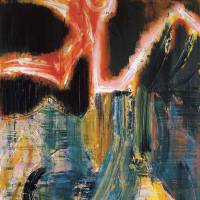The oil paintings of Kazumi Nakamura — sometimes visually simple as the works of Barnett Newman and Mark Rothko, and at other times as complex as a Jackson Pollock — are the result of an exploration of the ultimate question of artists: "What is the meaning of a painting?"
Nakamura's answer resulted in "differential painting," based on the idea that an artwork's meaning exists in its difference to others, and his oils referred to postwar American Abstract Expressionism as well as East Asian styles such as ukiyo-e woodblock prints, shan shui Chinese brush-and-ink landscapes and minhwa Korean folk art.
The National Art Center of Tokyo exhibition splits Nakamura's work into three chronological periods, illustrating his different explorations over three decades: Paintings as a Space; Paintings as a Social Segment; and Paintings as a Bird; March 19-May 19.
The National Art Center, Tokyo; 7-22-2 Roppongi, Minato-ku, Tokyo. Nogizaka Stn. 10 a.m.-6 p.m. (Fri. till 8 p.m.). ¥1,000. Closed Tue. 03-5777-8600;www.nact.jp



















With your current subscription plan you can comment on stories. However, before writing your first comment, please create a display name in the Profile section of your subscriber account page.